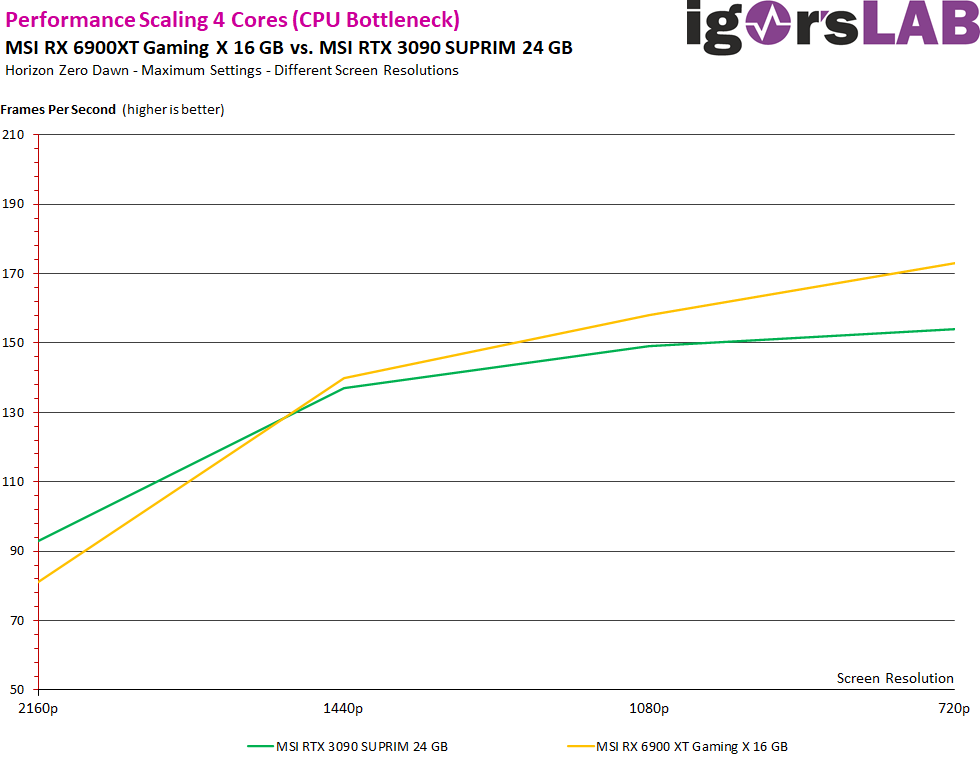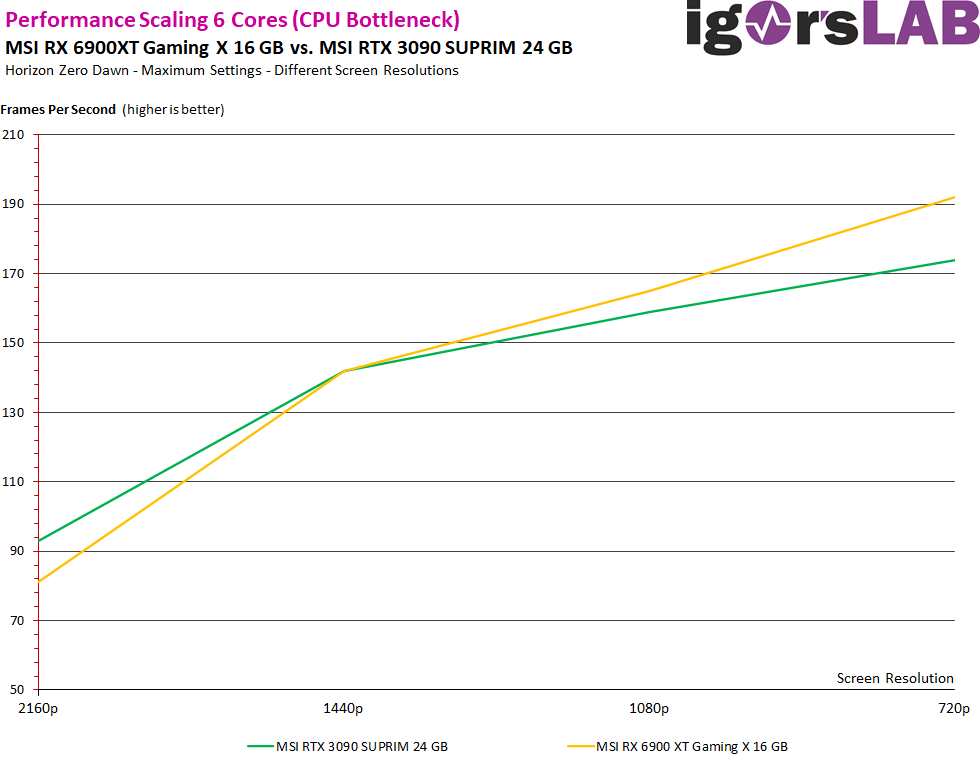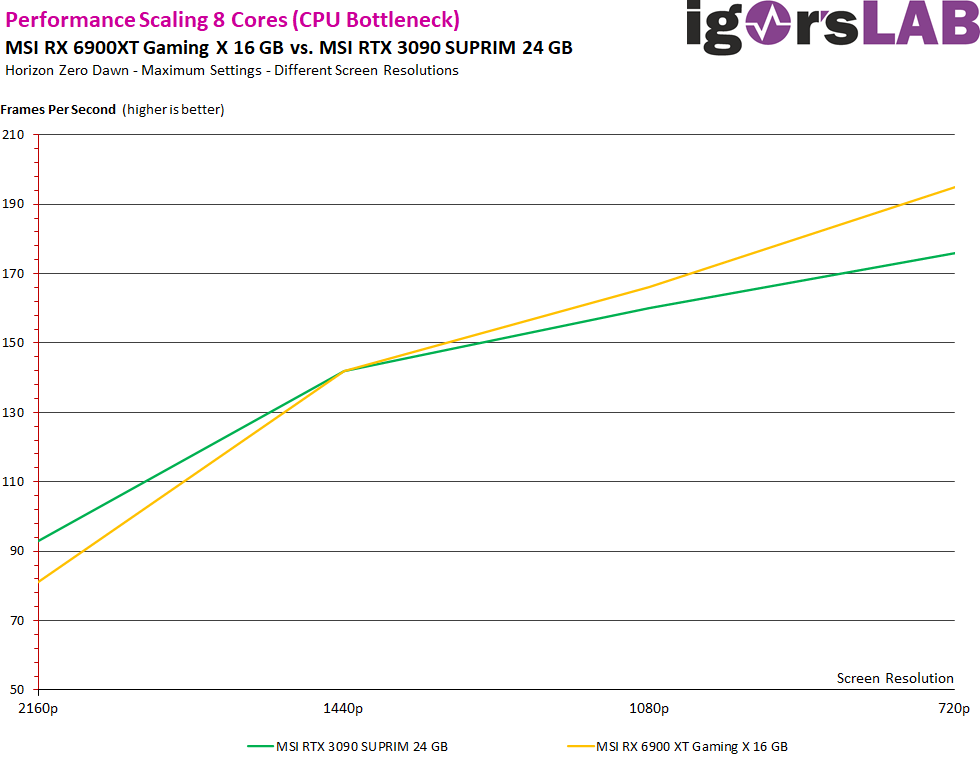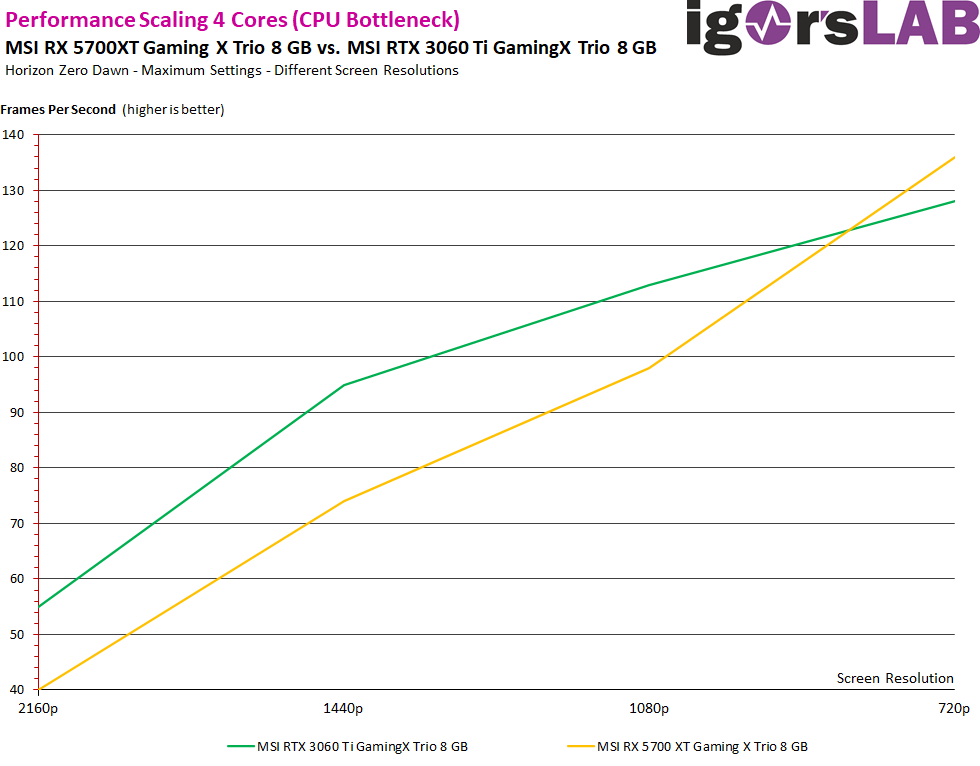Shifting performance in the limit?
No, it’s not because of Horizon Zero Dawn, which I chose out of many other games I tried on, it’s really because of another problem that I’ll locate later. Because the speculation whether all this can be traced back to a driver overhead caused by whatever or to something else does not help at this point. We need to test, test, test!
Let’s first look at the performance with 4 cores (8 threads). While the Radeon is still about 13 percentage points behind in 2160p, it’s already 2 percentage points ahead in 1440p, which then increases to 6 percent in 1080p, to even rise to 11 percentage points in 720p. Let’s remember 11, please. But it’s also interesting that the values of both cards in 2160p are already more or less identical to those with 6 or 8 cores, so hardly limiting the CPU here. However, the CPU bottleneck becomes more and more effective in WQHD and higher. However, the effects hit the GeForce card much harder than the Radeon card, albeit only relatively in terms of FPS!
With 6 cores and 12 threads, it only gets interesting below 1440p, because both cards perform equally fast in WQHD. The distance in 2160p is the same as with 4 cores. Feat, because the FPS are also the same, because only the graphics card limits here. The Radeon’s lead only becomes apparent in 1080p, where it is just under 4 percentage points. By the way, the Radeon with only 4 cores is just as fast as the GeForce with 6 cores now. interesting insight on the side. And in 720p? That’s exactly 10 percentage points more!
And what happens if you run both cards with 8 cores and 16 threads? In 2160p the Radeon is just as behind as always, in 1440p there is once again a tie and in 1080p the Radeon still leads with 4 percentage points and in 720p it’s now almost 11 percentage points again. It still increases the FPS slightly below 1440p (but only slightly) and remains in the performance increase but in almost the same ratio.
A counter test with a Ryzen 9 5950X including manual overclocking achieves a whole 4 FPS more with the Radeon RX 6900XT in 720p in the overall system, and just under 3 FPS with the GeForce. Again, the ratio remains about the same, but despite almost 300 MHz more clock, both cards only gain marginally.
Interim summary
I didn’t expect these findings (or maybe I did?) and they even contradict a little bit the benchmarks of the colleagues from Hardware Unboxed, who observed the same phenomenon, but also tested with different platforms and older generations. Indeed, a much weaker card tested for comparison in the form of the MSI Radeon RX 5700XT Gaming X Trio was unable to outperform the GeForce RTX 3090 even with only 2 or 4 cores. So it’s not that extreme.
But you get much closer than expected. With 4 cores, it’s only 154 FPS in 720p for the GeForce RTX 3090 and 136 FPS for the Radeon RX 5700XT, which should nominally be light years behind NVIDIA’s current top model. That’s only 13 percentage points behind! With older DirectX11 titles, the behavior is not really comprehensible in this form. And because it might be interesting, I’ve once again counter-tested the Radeon RX 5700XT with a nominally faster MSI RTX 3060 Ti as well. For the sake of better playability with the 4 core variant:
We see the same effect below 1080p, when both cards run back into the CPU limit, where the nominally much slower Radeon RX 5700XT can suddenly pass the GeForce RTX 3060 Ti.
- 1 - Introduction, test setup, methods and CPU limit
- 2 - Limits with 4, 6 and 8 CPU cores - Core scaling
- 3 - Benchmarks with 1280 x 720 Pixels
- 4 - Benchmarks with 1920 x 1080 Pixels
- 5 - Benchmarks with 2560 x 1440 Pixels
- 6 - Benchmarks with 3840 x 2160 Pixels
- 7 - Possible reasons, Asynchronous Compute and conclusion




































143 Antworten
Kommentar
Lade neue Kommentare
Urgestein
1
Urgestein
1
Veteran
1
Veteran
Urgestein
Urgestein
1
Veteran
Urgestein
Veteran
Urgestein
Veteran
Moderator
1
Veteran
Alle Kommentare lesen unter igor´sLAB Community →